 Dan Grec
.
June 26, 2023
.
All Feature Vehicles
Dan Grec
.
June 26, 2023
.
All Feature Vehicles
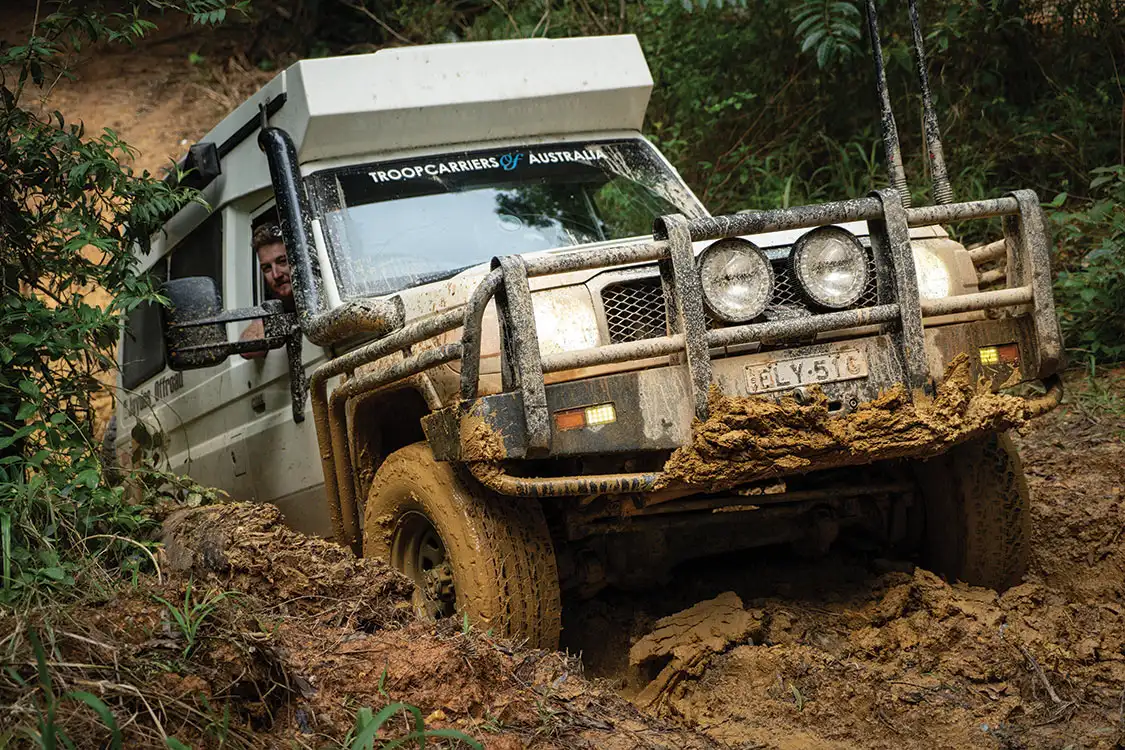
Making the decision to ford a large river is never easy. When pushing the limits, I always slow down and try to use my brain, so I don’t become an internet meme, stranded on the roof of my rapidly sinking Jeep. Before charging in, I assess not only the depth but also the flow rate of the river and what the riverbed might be like. A crossing with a firm gravel bottom is an entirely different challenge than one with bottomless mud. Any large boulders or deep holes are also nice to know about in the hopes I can avoid driving directly into them.
“The CREB Track has been a stunning introduction to 4×4 exploration in Far North Queensland, and teaming up with a convoy of great people made for a lot of laughs and good times.”

The most straightforward way to be certain about all of this is simply to walk across the river before driving in. If this was any ordinary river, that’s exactly what I would do.
While standing a respectable distance from the actual water, I’m very aware this is absolutely not any ordinary river.
We’re in Far North Queensland in Australia, standing on the banks of the mighty Daintree River, which is infested with ‘Salties’, the local name for man-eating saltwater crocodiles that commonly grow over fifteen feet in length. While I can’t see any from where I’m standing, I feel certain they are lurking just under the waterline to make a meal of us.
Not only do we have to successfully cross this river, but it would also be nice not to get eaten by crocs while doing it.
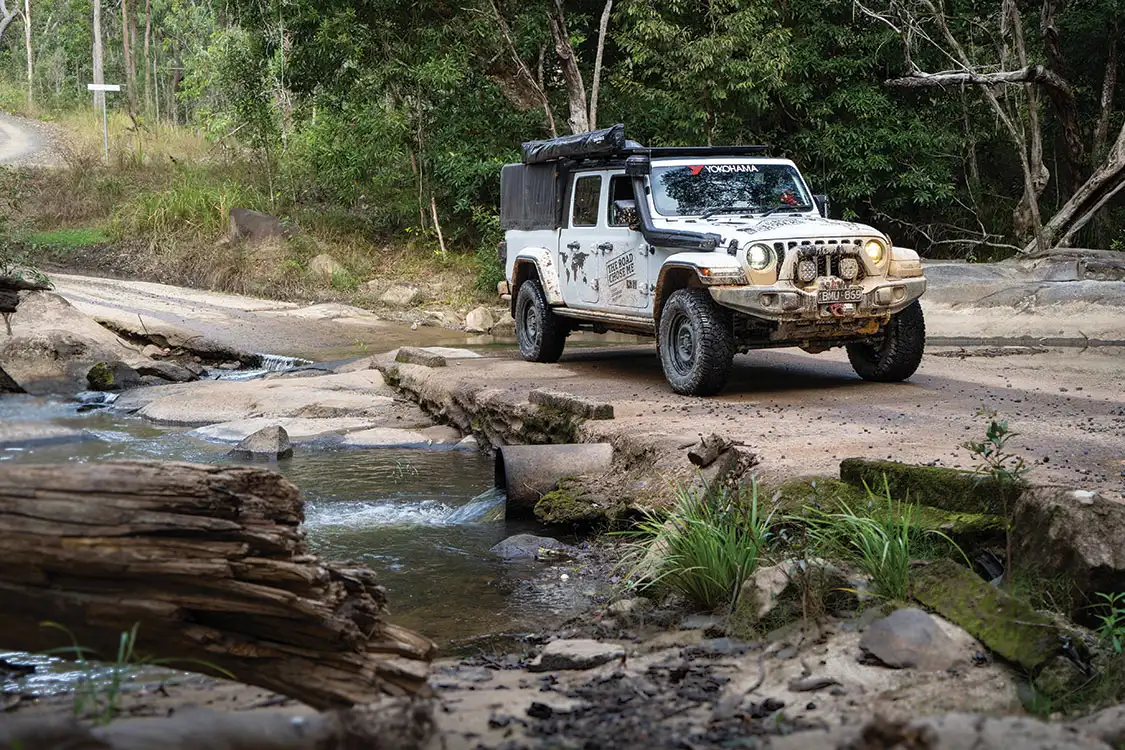
Created as the service access track for the old Cairns Regional Electricity Board (CREB), the track mostly follows ancient Aboriginal foot trails through dense rainforest. As well as providing spectacular scenery, the CREB is notorious for being one of Australia’s most challenging four-wheel-drive adventures. With rain, the track becomes extremely slippery and dangerous, and in recent months multiple vehicles have rolled on the slick clay and were left in the thick jungle for days. During that incident, even a Unimog sent to help was no match for the steep climbs and quickly became another victim.
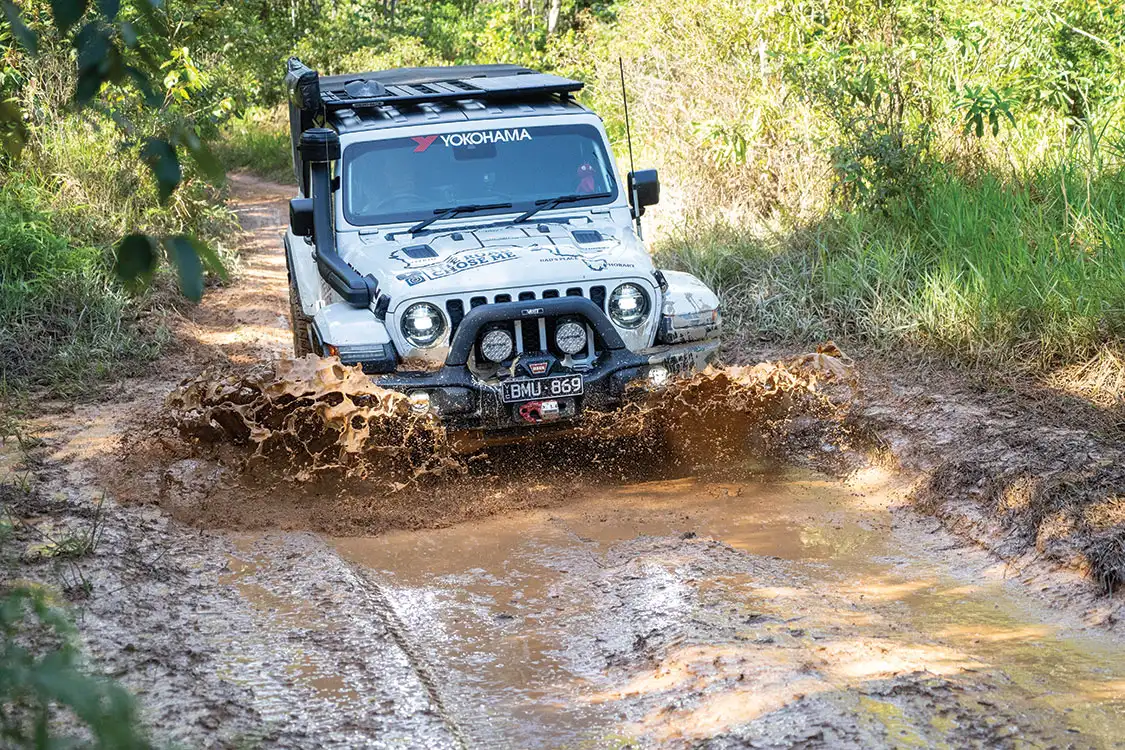
The track traverses spectacular World Heritage-listed rainforest as it weaves north from Daintree village, up and over multiple peaks of the McDowall Range, and back down past the Aboriginal community of Wujal Wujal.
This track is not to be taken lightly, so we team up with a group of friends we tackled the Oodnadatta Track with many months ago. Since then, we have all somehow managed to explore in different directions around the country, and it’s great to fill in all the blanks and tales of adventure.
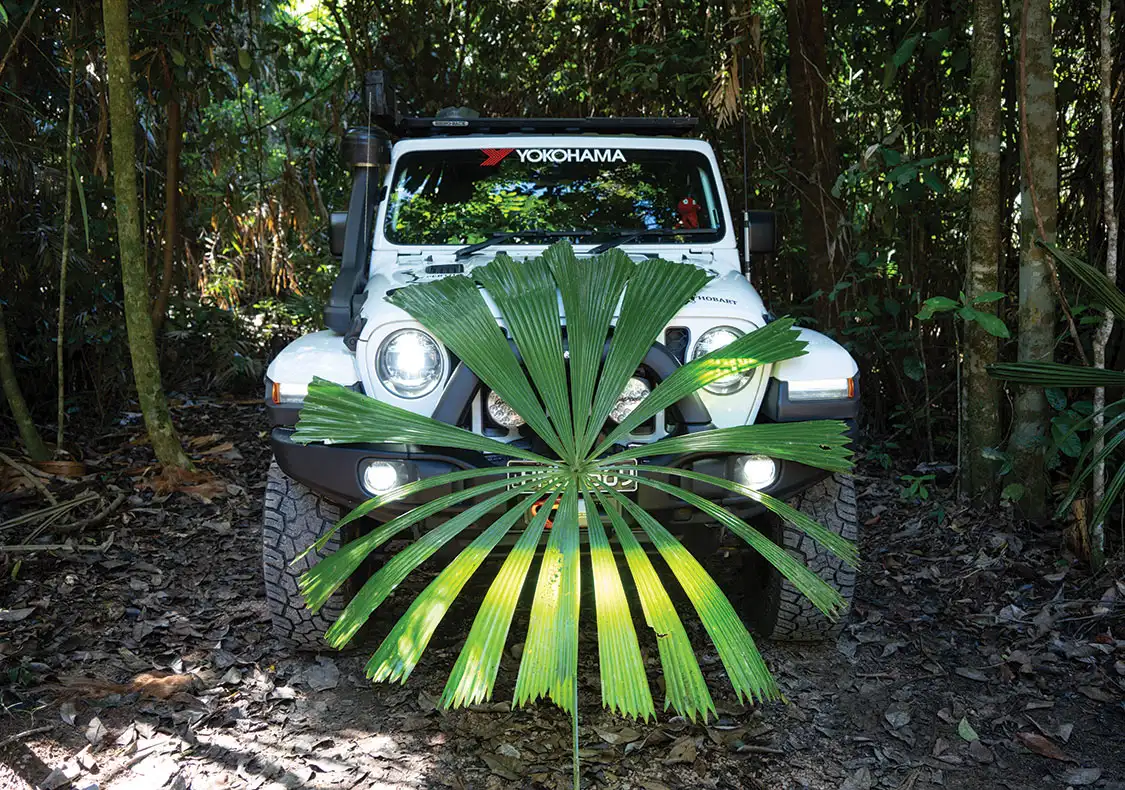
As is often the case when 4×4 touring in Australia, all four of the vehicles we team up with are big Land Cruisers, all equipped with tuned 4.5L V8 turbo diesels. With integrated pop-up roofs, elaborate interior buildouts, bull bars, winches, snorkels and a forest of radio antennas, the Cruisers are so nearly identical even the dogs have trouble figuring out which vehicle they should be getting into.
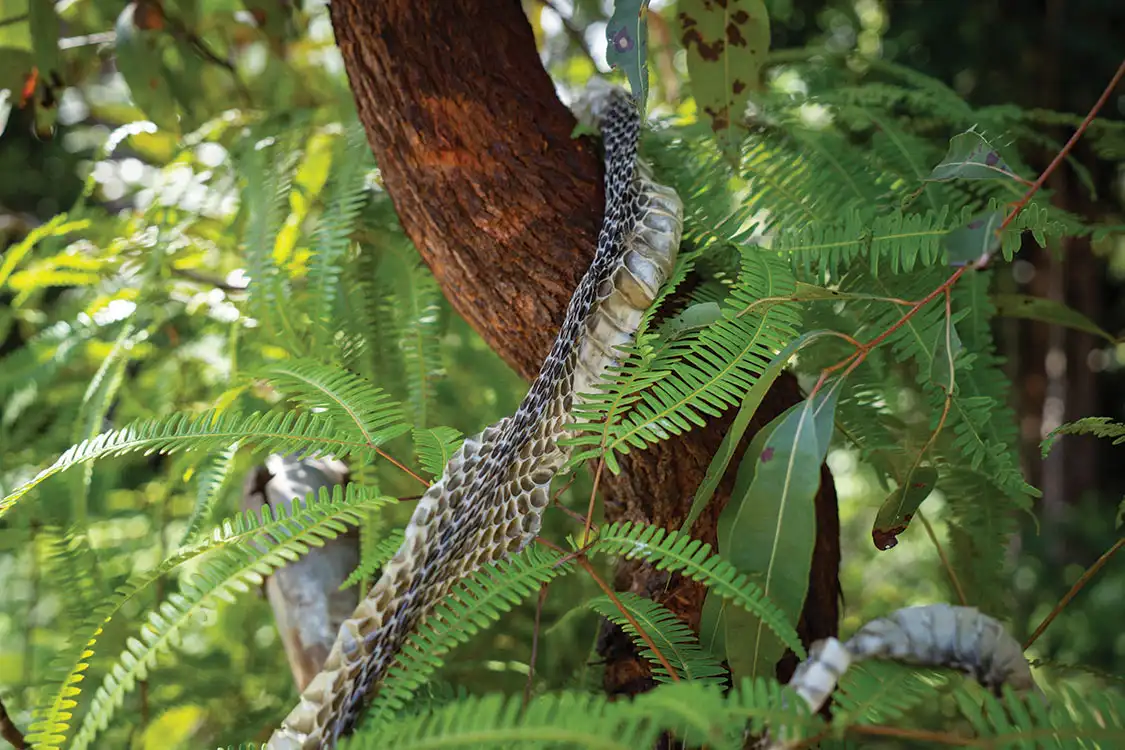
After meeting at a stunning campground elevated above the Daintree, we set off downriver on a croc tour. In less than thirty seconds, we spot the resident alpha male sunning himself on the bank and get a huge laugh when Canadian Katie doesn’t see the massive reptile with mouth wide open until we can almost reach out of the boat and touch it. While she’s good at spotting bears, we all agree she wouldn’t last too long against Australian critters. Over the next hour, as we meander downstream, we see a handful more of the large reptiles in and out of the water. Seeing a large female swim under the boat without making so much as a ripple is an eerie experience.

Our convoy is on the road early the next morning, and just ten minutes later at the official start of the track, we’re at the mandatory crossing of the Daintree River. We’ve been watching the weather reports and talking to locals about the river height, and literally, every report has given a different story. We’re told the water depth is most likely going to fall somewhere between the top of the tires and at the top of the windshield, which really doesn’t tell us much. We walk to scout the crossing as much as possible, but we’re not sure how close to the water we can safely stand. While I still carry an Australian passport, I’m no Crocodile Dundee, and I have no intention of going head-to-head with a big salty. Growing up in southern Australia means I know virtually nothing about these mean-eating lizards, so I stand well back while trying to see through the moving water with polarized sunglasses.
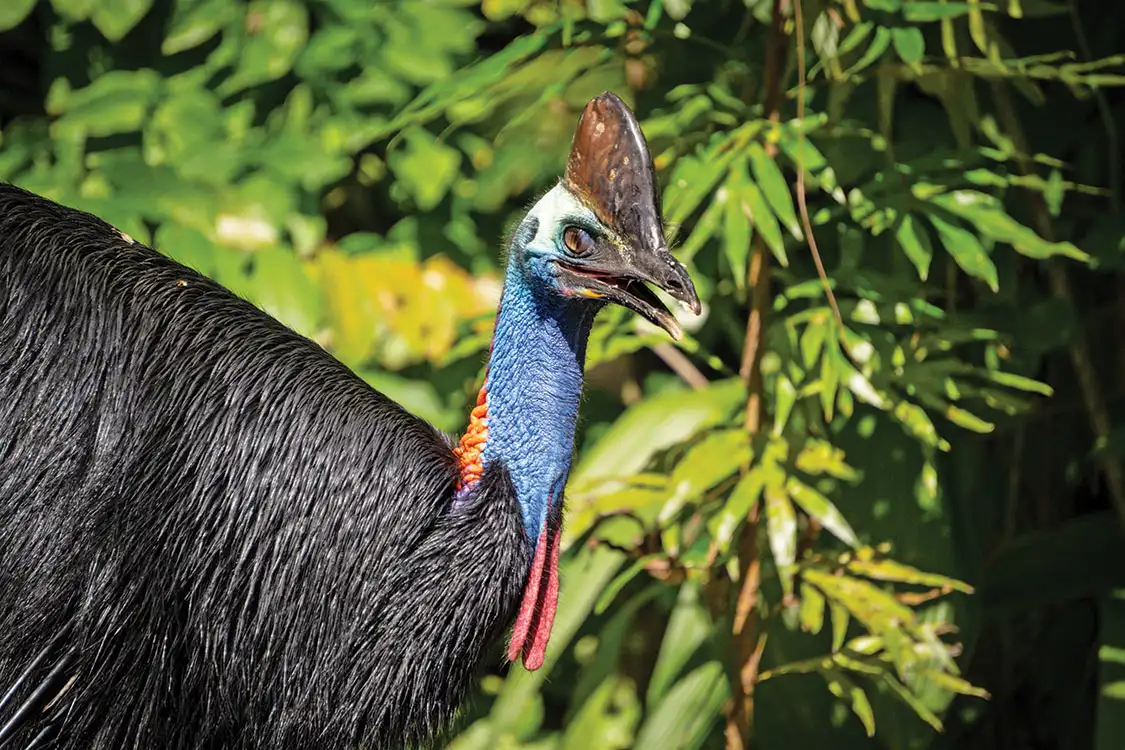
A couple of the Land Cruisers are on 35-inch tires, and I’m perfectly happy when they volunteer to go first, showing the rest of us the best line through the river. One at a time, we swing wide, driving downstream for a hundred yards before turning back across the current and climbing up the far bank, an easy gravel exit. While coming back across the current, the water just barely laps at the front of the hood, and the firm gravel bottom gives plenty of traction to keep us moving across.
Early on the track we navigate a series of small mud holes, washouts and soggy low-lying areas before we begin to climb in earnest. Simultaneously, the jungle closes in on all sides until we’re completely surrounded by the dense green foliage.
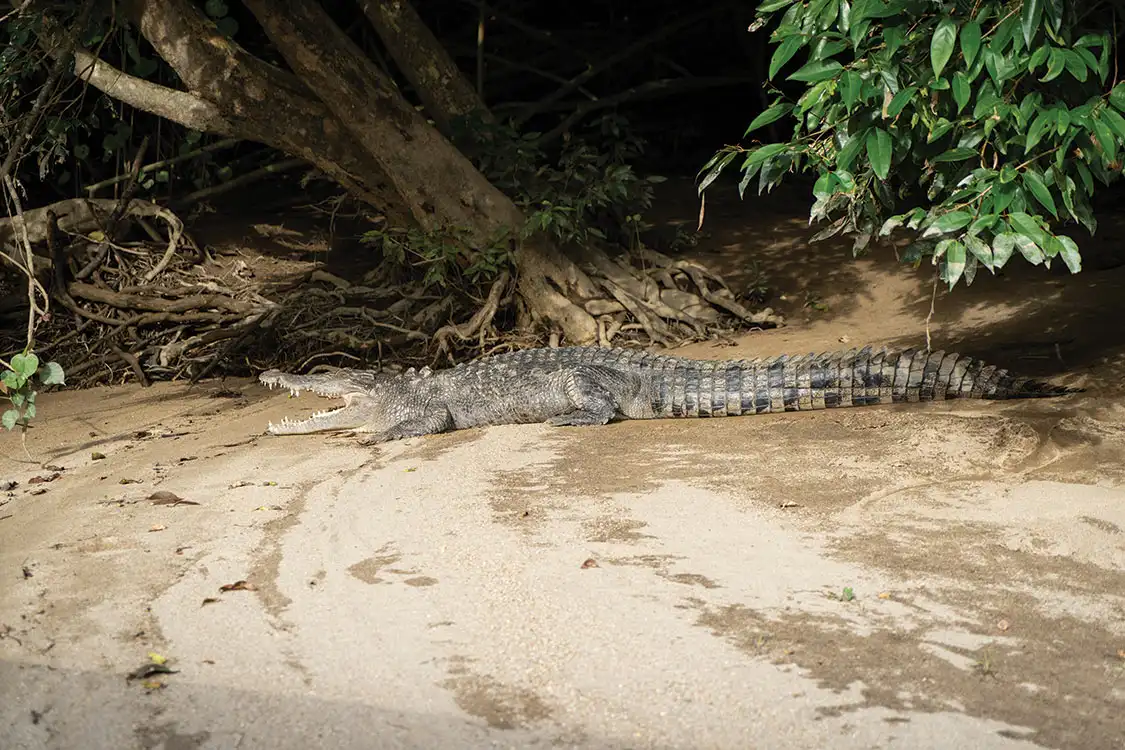
For the first half of the day, the track climbs up to a high lookout, and thankfully the notoriously slick clay and red mud isn’t too slick. As far as we can tell it hasn’t rained in the last day or two, and while everything is a little damp and we encounter plenty of sticky mud pits, none of the climbs are particularly slick.
“As well as providing spectacular scenery, the CREB is notorious for being one of Australia’s most challenging four-wheel-drive adventures.”
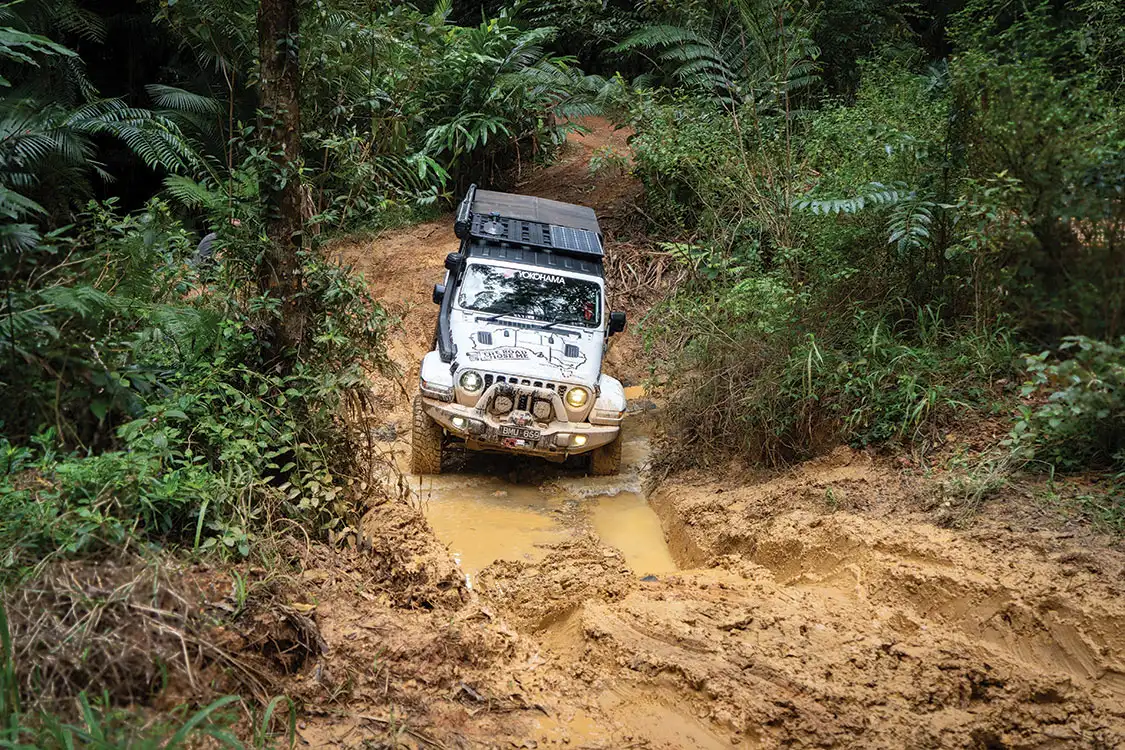
The CREB slices through Daintree National Park, which contains the oldest rainforest anywhere on Earth. Because the rainforest here has existed continuously for more than 110 million years, many species of trees and plants found in Daintree are the ancient ancestors of more common species today. This flora dates back roughly 30 to 50 million years, and gives scientists a direct window into the past, and what the planet previously looked like. Elsewhere on Earth these ancient plants and trees died out millions of years ago, and can only be studied as fossils. This park is made up of trees and plants that existed when dinosaurs roamed the Earth; it is a literal Jurassic Park.
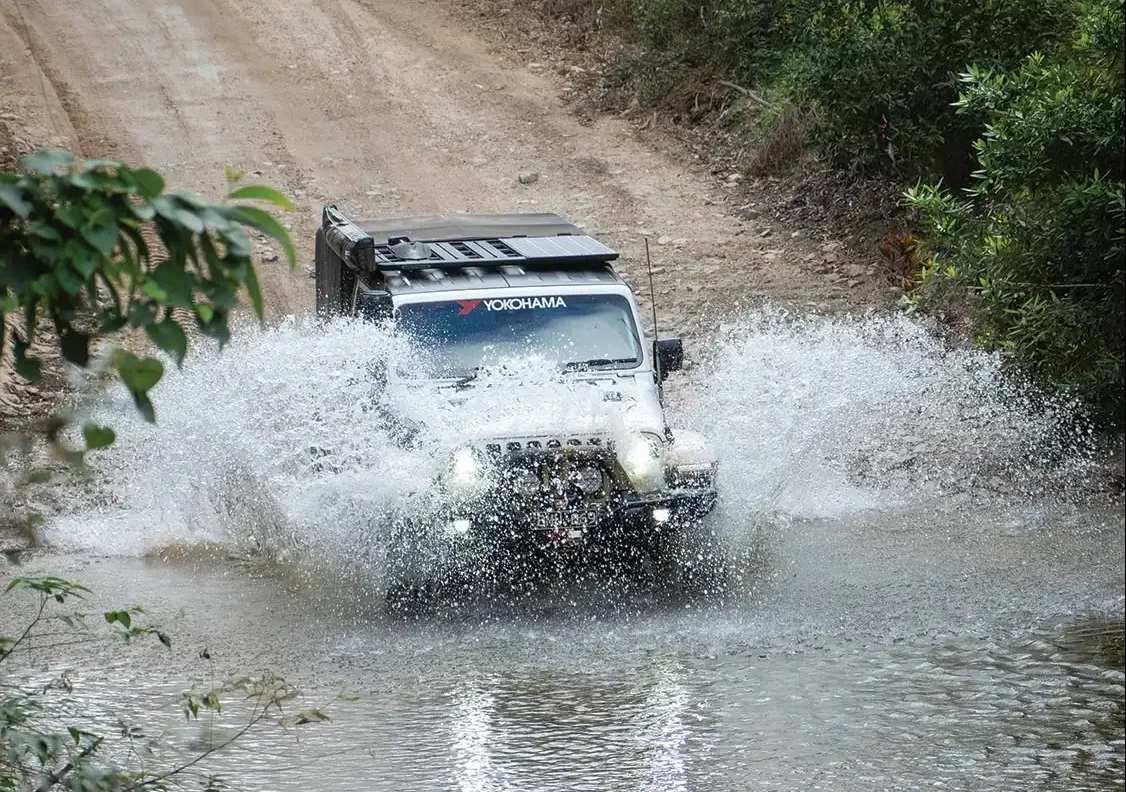
The Daintree is also home to thousands of animal species, including the majestic cassowary. This flightless bird is roughly equal in shape and size to an emu or ostrich, and its striking neck is decorated with bright iridescent blue, red, and orange feathers. While cassowaries are typically wary of humans, they can get very aggressive when provoked or defending young. Their three-towed feet have large claws that resemble a velociraptor, making me wonder if we may actually see a dinosaur wander by. Cassowaries have been known to kill humans, leading to the label of ‘World’s Most Dangerous Bird.’
The entire region has enormous cultural and spiritual significance to the local Aboriginal people, and in a historic deal made by the government of Queensland, the eastern Kuku Yalanji people took formal ownership of Daintree National Park in 2021.

After enjoying the stunning views from the lookout at the track summit, we make our way down the backside of the mountain, avoiding the worst of the deep washouts. We cross a few small rivers and slash up some mud here and there, but don’t encounter anything to really slow our progress. As we arrive at a much bigger creek crossing, however, I sense things are about to get exciting. There isn’t much water in the creek, though it’s obvious the bottom and far bank are pure thick mud. The bank on the far side is very steep, leading us to dig out winch controllers, shackles and tree protectors before even attempting it.

Running 35-inch mud terrains on his Land Cruiser, Jake is happy to lead the way and show us how it’s done. Even with the massive diesel engine bouncing off the rev limiter, he just barely manages to claw up the bank and out of the pit, with mud spitting from the tire tread blocks. Now that the gauntlet has been thrown down, we all line up for an attempt at the sticky mud hole. I’m well aware I need to carry the Jeep flag while deep in Land Cruiser territory. With a lot more wheel spin and engine revving, it becomes clear that ground clearance and traction are the limiting factors. Not a single vehicle on 33-inch tires manages to complete the climb, and all eventually give up and require winching.
“As we arrive at a much bigger creek crossing, however, I sense things are about to get exciting. There isn’t much water in the creek, though it’s obvious the bottom and far bank are pure thick mud.”
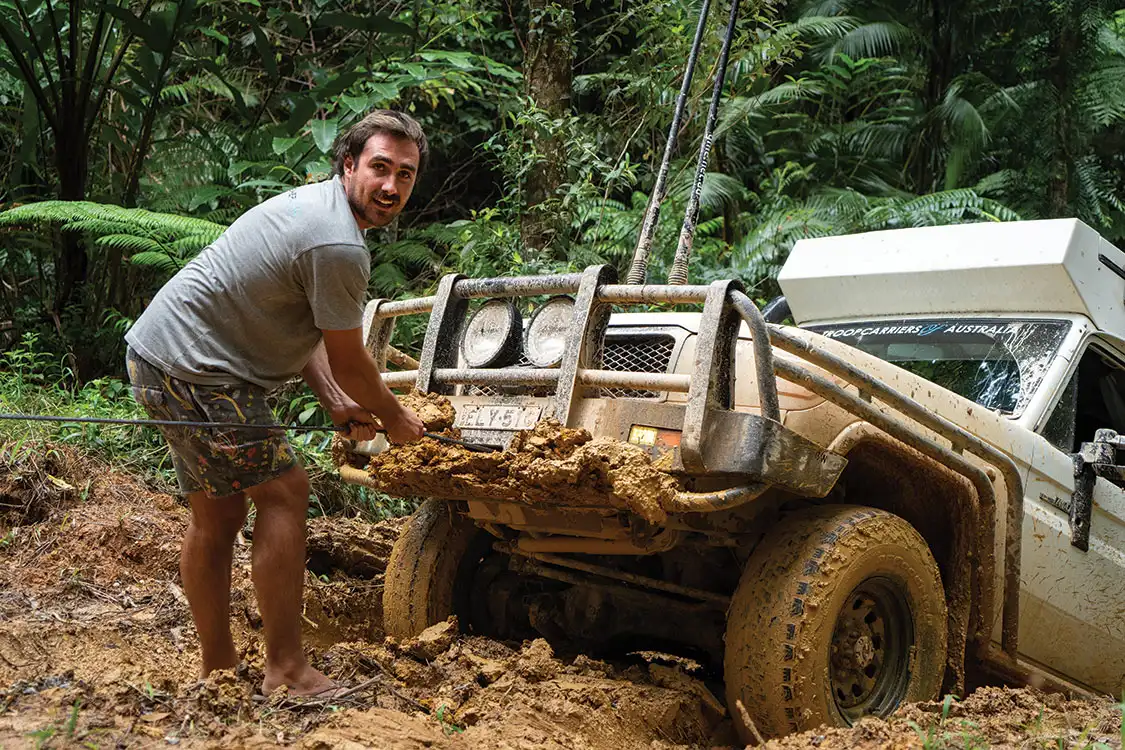
Much to the admiration of the other ladies on the drive, Katie jumps in the driver’s seat of the Jeep and carefully lines up the much longer Gladiator for the ideal entry. In low range 4×4 with both diff locks engaged and the front sway bar disconnected, the Jeep easily moves through the river and mud at the bottom. The front tires have no problem with grip as the front half of the Gladiator climbs up the bank. With the rear tires not yet on the climb, and the front tires already leveling out, the extra-long wheelbase of the Gladiator comes into play as the belly grounds out on the muddy breakover. Katie makes another attempt, though the result is identical, with the belly grounding out on the mud before the Jeep can scramble up and out.
“With integrated pop-up roofs, elaborate interior buildouts, bull bars, winches, snorkels and a forest of radio antennas, the Cruisers are so nearly identical even the dogs have trouble figuring out which vehicle they should be getting into.”
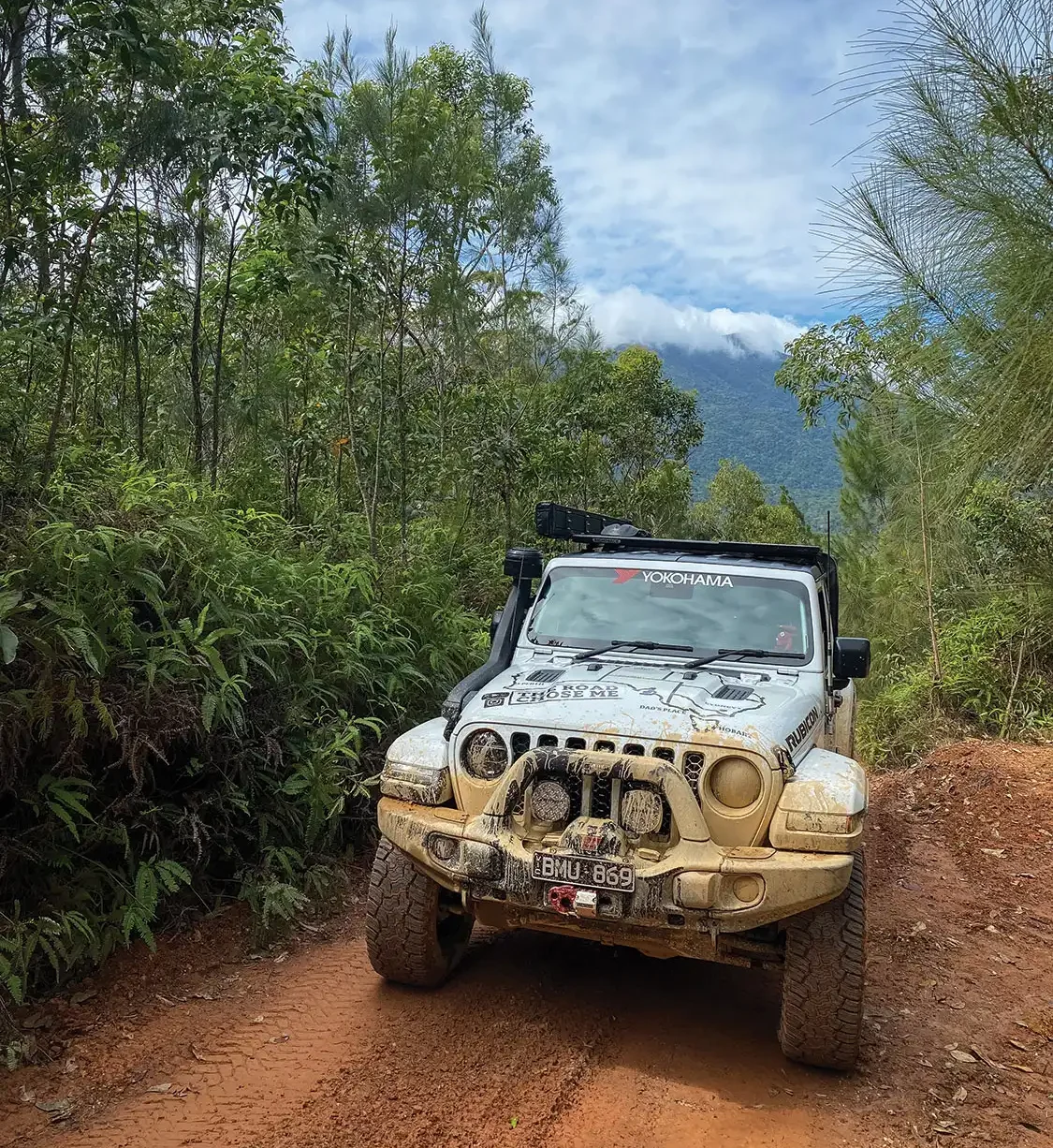
Australia has extremely strict laws about vehicle modifications, and when building out my Gladiator I wanted to be certain I wouldn’t attract unwanted attention from the Aussie Police who eagerly enforce these laws at every opportunity. While it is possible to get vehicles with 35-inch tires legally engineered, the Gladiator is so new in Australia that no company has to complete this certification process, and so as it stands 35-inch tires are actually illegal. Not wanting to be put off the road, and always conscious of gas mileage, I designed and built this Australian Gladiator for 33-inch tires, leaving the belly hanging closer to the ground than is ideal.
There’s no doubt more ground clearance would have helped, and as I hand Katie the controller for her first time using the winch, I wonder if 35s would have been enough, or if the much more common North American choice of 37s on the Gladiator would have been needed. I always enjoy learning the limits of a vehicle, and this was the perfect opportunity to see exactly what would happen on a short and sharp climb.
As we continue to drop in elevation the rainforest opens up, and soon we’re on a decent gravel road before arriving at Roaring Meg Falls, a stunning rocky outcrop where the turbulent water of the Bloomfield River races over and between enormous boulders. With all the whitewater and elevation, it’s extremely unlikely there are any salties this far from the ocean, and while Katie stands lookout, Josh and I brave a very quick dip to beat the relentless heat and humidity.

The CREB Track has been a stunning introduction to 4×4 exploration in Far North Queensland, and teaming up with a convoy of great people made for a lot of laughs and good times. I really appreciate that our group worked together, using our heads to tackle the tricky conditions and make decisions collectively. Knowing what lies ahead, I feel much more confident traveling in convoy from now on.
Late in the afternoon, we roll into The Lion’s Den Hotel, one of Northern Australia’s famous outback pubs. Out back is an enormous grassy camping area packed to the brim with 4x4s, camper vans, rooftop tents and swags, and it’s clear everybody has decided an ice-cold beer is in order.
After a day like this, it’s hard to disagree.
Join Dan’s ongoing global adventures on YouTube and Instagram @TheRoadChoseMe.
Editor’s Note: A version of this article appeared in TREAD July/August 2023.
Share Link